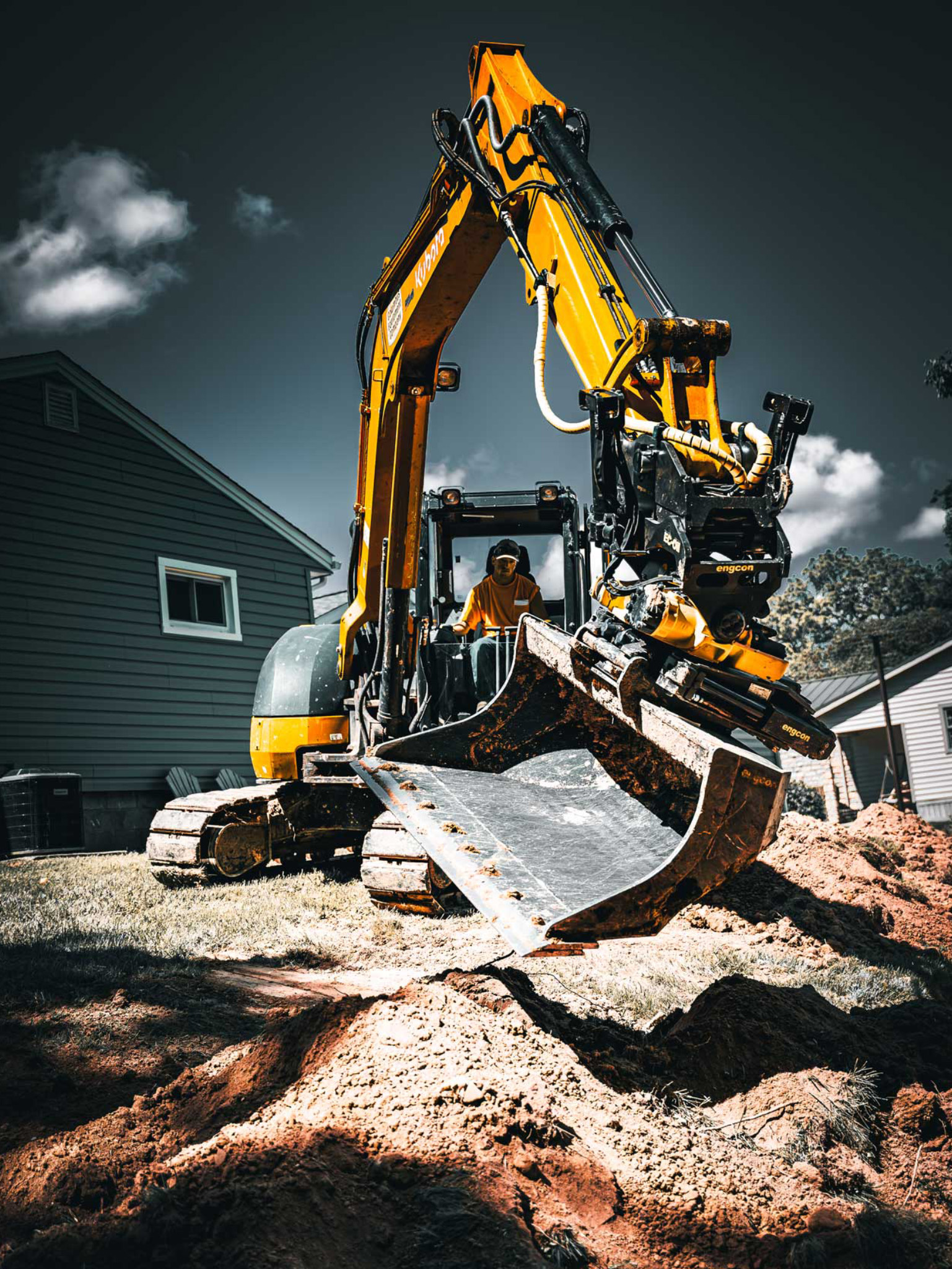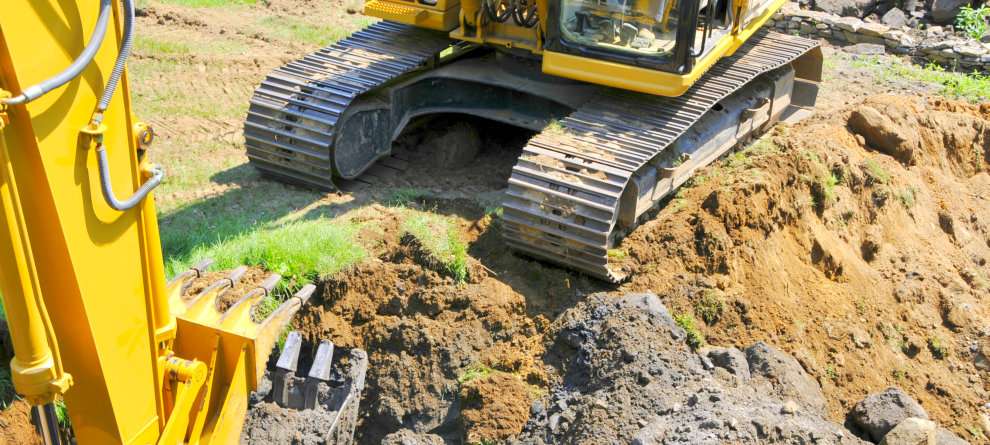Residential Excavating Ohio - Specialized Excavation for Ohio Homes
Residential Excavating Ohio - Specialized Excavation for Ohio Homes
Blog Article
In-Depth Exploration: The Science Behind Superior Excavation Practices
The world of excavation practices is a domain where science intertwines with workmanship to uncover the enigmas concealed beneath the earth's surface. From old hand tools to modern hydraulic excavators, the development of excavation strategies has actually been a testimony to human ingenuity and technological improvements. Nonetheless, what absolutely establishes superior excavation techniques apart is a deep understanding of geological concepts, paired with the utilization of advanced tools and methods. By exploring the science behind these techniques, we can reveal the secrets that exist under our feet and value the accuracy and experience that enter into every dig.
Evolution of Excavation Strategies
Throughout background, the development of excavation strategies has actually played a vital function beforehand building and construction methods and archaeological explorations. From the primary devices used by our forefathers to the advanced machinery used in modern times, the development of excavation approaches has substantially transformed just how we approach different tasks.
In ancient times, manual work with basic devices such as wheelbarrows, shovels, and pickaxes was the main approach of excavation. This labor-intensive process limited the deepness and scope of excavations, usually leading to slow-moving progress and limited access to specific websites. However, as civilizations advanced, so did the tools and strategies utilized for excavation.
The Industrial Revolution marked a transforming point in excavation exercise with the intro of steam-powered equipment. This advancement changed the field, permitting faster and extra extensive excavations. In contemporary times, modern technology plays a critical function in excavation, with advancements like GPS systems, drones, and 3D scanning improving accuracy and performance in the area. The evolution of excavation methods proceeds to form the means we construct, explore, and understand the world around us.
Function of Innovation in Excavation

The combination of innovative innovation has essentially transformed the area of excavation, enhancing precision and performance to unprecedented levels. One of the essential technological developments that has actually dramatically influenced excavation techniques is the application of general practitioner systems. These systems permit specific mapping of excavation websites, making it possible for drivers to precisely find below ground energies and frameworks. Furthermore, using telematics in excavation devices has enabled real-time monitoring of device performance, causing positive maintenance and increased operational efficiency.
In addition, the introduction of 3D modeling and simulation software program has streamlined the preparation procedure for excavation projects. Designers and drivers can now imagine the whole excavation process before beginning, enhancing and identifying prospective obstacles workflow. Together with this, the application of drones in excavation tasks has promoted aerial surveys, volumetric dimensions, and site assessments with unequaled rate and accuracy.
Geological Principles in Excavation
An understanding of next page geological concepts is necessary for guaranteeing the structural integrity and security of excavation websites. Geological factors play a vital duty in determining the feasibility and safety of excavation projects (excavating ohio). One crucial geological principle to think about is the sort of soil or rock present at the site. Different soil types, such as sand, crushed rock, or clay, have varying levels of security and call for various excavation methods. Natural soils like clay may require added assistance to stop collapses, while sandy soils might be vulnerable to disintegration during excavation.
By carrying out thorough geological studies and analysis, designers and excavators can create methods to reduce threats and make certain the effective completion of excavation projects. Ultimately, including geological principles right into excavation methods is essential for attaining risk-free, reliable, and sustainable results.

Latest Tools for Excavation
In the realm of excavation practices, contemporary developments in tools have revolutionized the efficiency and precision of excavation procedures. Among the current devices making waves in the market is making use of drones furnished with sophisticated imaging innovation. These drones can offer comprehensive aerial studies of excavation websites, using real-time information on topography and prospective Read More Here risks. This information aids in far better preparation and decision-making throughout the excavation process.
Another cutting-edge tool gaining popularity is the application of 3D printing innovation for producing custom-made excavation devices. This enables the manufacturing of specialized devices that are customized to the certain demands of a task, enhancing efficiency and lowering downtime.
Moreover, improvements in materials science have caused the growth of more powerful and more sturdy excavation tools. lancaster excavation. Tungsten carbide-tipped excavator add-ons, as an example, offer remarkable performance in difficult ground problems, improving performance on-site
Science's Influence on Excavation Practices

Furthermore, clinical research on dirt mechanics and geotechnical design has provided important understandings right into soil behavior, enabling excavation specialists to make informed decisions pertaining to excavation methods and soil stabilization methods. On the whole, scientific research continues to drive development and renovation in excavation techniques, making excavation projects much more reliable, cost-effective, and lasting.

Verdict
In conclusion, the development of excavation methods has been considerably affected by developments in modern technology and a deeper understanding of geological concepts. The most recent tools and equipment used in excavation have boosted performance and accuracy in the area. The application of scientific knowledge has actually dramatically improved excavation methods, resulting in more reliable and lasting approaches for digging deep into different kinds of materials.
In the world of excavation methods, contemporary advancements in tools have revolutionized the efficiency and accuracy of excavation procedures. By leveraging scientific principles, the excavation industry has actually been able to dramatically boost effectiveness, accuracy, and safety in excavation procedures. GPR enables excavation teams to non-invasively scan and map subsurface frameworks, energies, and prospective risks, enabling them to intend excavation jobs with greater accuracy and minimized danger of accidents.
In addition, clinical research study on soil mechanics and geotechnical design has offered valuable understandings into soil actions, enabling excavation experts to make informed choices relating to excavation techniques and soil stablizing methods. In general, scientific research proceeds to drive advancement and enhancement in excavation practices, making excavation tasks much more efficient, affordable, and sustainable.
Report this page